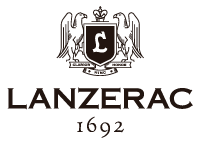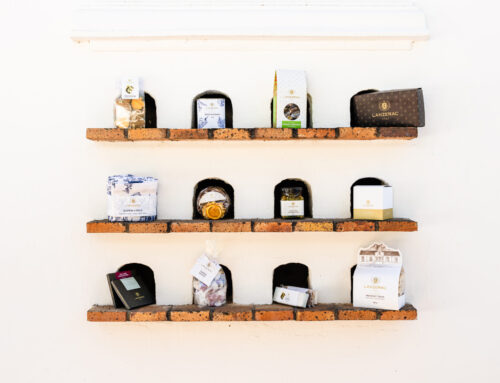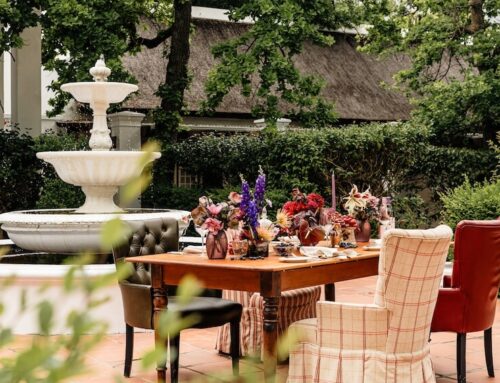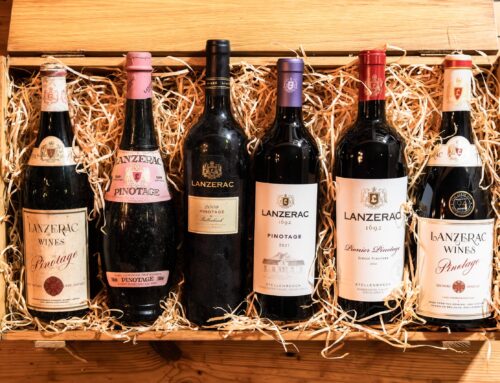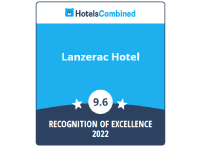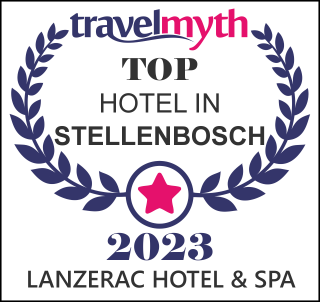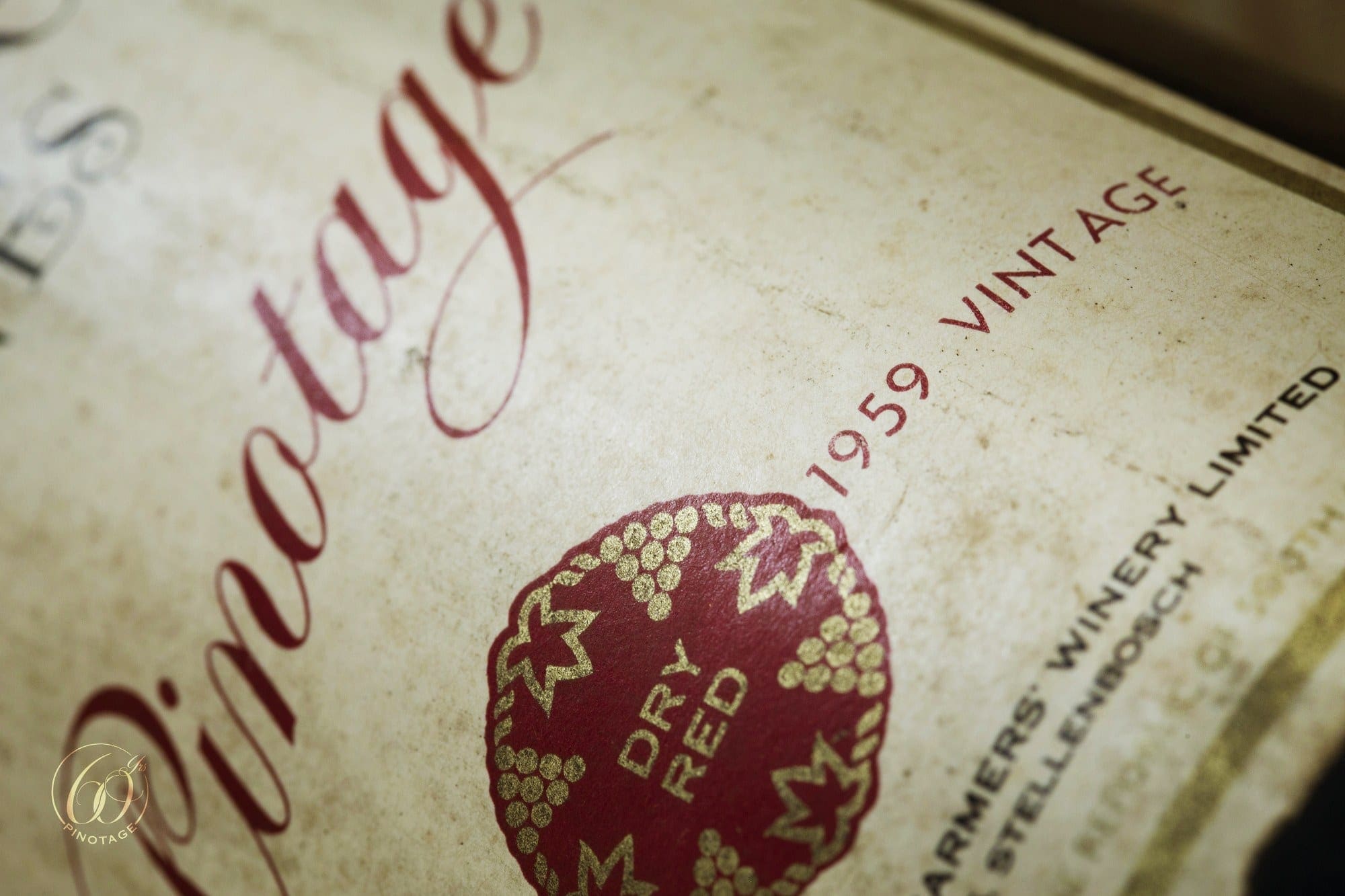
Pinotage is having a moment. Whether it’s garnering gold medals in wine competitions or impressing critics both at home and abroad, this proudly South African cultivar is finally enjoying its moment in the sun. And Lanzerac Wine Estate in the Stellenbosch winelands is celebrating its pivotal role in putting Pinotage on the map over the past 60 years.
While this proudly South African grape is today enjoying a renaissance in style and popularity, it’s fair to say that South African winemakers were slow to realise the true potential of Pinotage.
Professor Abraham Izak Perold, the first Professor of Viticulture at the University of Stellenbosch, created Pinotage in 1925. He cross-pollinated two classic French grape varietals – Pinot Noir and Hermitage, also known as Cinsaut – to create Pinotage, a grape that has become synonymous with South African vineyards. His cross-pollination only produced four seeds, but he planted and carefully tended these in the garden of his Welgevallen residence, little more than two kilometres from the historic manor house at Lanzerac.
But by the late-1950s Perold’s creation was still unknown to many wine lovers, and you certainly wouldn’t find a bottle of Pinotage on offer in Cape Town’s finest restaurants.
“There was plenty of Pinotage in the ground, but it was all blended into dry red wines with other cultivars,” explains Wynand Lategan, Cellar Master at Lanzerac Wine Estate. “Nobody was making it and bottling the wine as Pinotage.”

That all changed with the harvest of 1959, when the Stellenbosch Farmers’ Winery cooperative, then owners of the estate, realised the potential of that year’s vintage, and, in 1961, created the world’s first bottled Pinotage, using the Lanzerac label.
Six decades after that landmark vintage, just a few bottles of the 1959 Lanzerac Pinotage remains in the estate’s vinoteque, closely guarded icons of this remarkable South African grape.
From those humble beginnings, today Pinotage is the third-most-planted red grape in the South African winelands, after Cabernet Sauvignon and Shiraz. However, while plantings of these two cultivars has fallen over the past decade, Pinotage is on the rise and today accounts for 7.3% of South Africa’s total area under vineyard.
That is largely thanks to passionate Pinotage fans like Lategan, who has worked tirelessly to craft award-winning wines that redefine the potential and character of the cultivar.
After spending his early career in the world of financial journalism, Lategan’s growing passion for wine saw him swop his spreadsheets for the cellars of Elsenburg Agricultural College, where he completed his Diploma in Wine & Cellar Technology. Harvest experience at the renowned Bordeaux second-growth Château Durfort-Viviens followed, before Lategan joined Lanzerac in 2005. Over the past 14 harvests he has continually refined the estate’s winemaking philosophy, seeking the balance of elegance and power that has become the subtle signature of Lanzerac Pinotage.

It’s a signature that has evolved over time, says Lategan: “If you look at the older vintages of Lanzerac Pinotage, the alcohol levels were much lower, and the grapes were picked earlier than we do today. The wines weren’t made to be drunk young, but with high acidity and strong tannins they really developed over time.”
Pinotage certainly earned itself a poor reputation in the 1990s due to over-cropping and harsh treatment in the cellar, but the approach across the winelands has become increasingly refined in a bid to showcase the more elegant character of the cultivar.
“In the last decade the approach has been towards a more refined style of Pinotage, more balanced,” says Lategan. “For us at Lanzerac it’s all about finding the sweet spot between freshness, elegance and power.”
For Lategan the journey to crafting memorable Pinotage begins out in the vineyards, where Lanzerac’s Viticulturist, Danie Malherbe, focuses on bush vines and careful canopy management to ensure true balance and phenolic ripeness in the fruit.
“You need to create balance in the vineyard, treating Pinotage as you would one of the noble cultivars,” says Lategan. “To make a really good Pinotage your yield needs to be less than 10 tons per hectare, and you need to get sunlight onto the tight bunches to ensure even ripening.”
Part of that innovative viticultural approach is the dedication to showcasing the unique mountain terroir of Lanzerac’s Pinotage vineyards, most of which are set high on the slopes of the Jonkershoek valley. Here at altitude the vineyards benefit from soaking winter rains and cooler temperatures during the summer ripening season, the vineyard roots reaching deep into soils of decomposed sandstone and granite, with a layer of water-retaining clay.
“The terroir of the Jonkershoek valley gives Lanzerac Pinotage a real point of difference,” adds Lategan. “Because of the soils and mountain climate the vines have to work a bit harder, which brings structure and higher natural acidity to the wine.”
In the cellar Lategan strives to preserve that unique character of the vineyards, gently guiding the grape from lug-box to barrel to bottle.
“Because the grapes give us so much, our approach is to treat the fruit gently,” says Lategan. “The terroir delivers plenty of colour and fruit character, which means that in the cellar we look to work softly with the wine. The magic is to find the balance between power and elegance.”
That meticulous attention to detail and craftsmanship is evident across the three examples of Pinotage in the Lanzerac portfolio.
The range begins with the approachable Lanzerac Pinotage Rosé, the fruit picked from the vineyards that surround the estate’s Tasting Room and Deli.
An ideal pairing for lazy summer lunches, this dry and perfumed rosé is brimming with notes of rose petals, redcurrants and crushed strawberries. Limited skin contact delivers a delicate rosy hue to the wine, balancing fruit and freshness in a wine that’s simply superb for summer sipping.
While the Lanzerac Pinotage Rosé has proven enormously popular, and is an approachable introduction to the cultivar, the premium Lanzerac Pinotage is an altogether more serious expression of the varietal.
Full-bodied and complex, with a balance between fruit expression and tannin structure, the deep colour and bold fruit palate makes it an ideal match for venison dishes.
Sourced primarily from vineyards in the Jonkershoek valley, “this wine is really about showcasing Pinotage from the region,” says Lategan. “The emphasis here is on the fruit character of Pinotage, with soft tannins to make it approachable from the day it’s released.”
But if there’s a wine that truly exemplifies the potential of Pinotage it’s the Lanzerac Pionier Pinotage, flagship of the Heritage Range that honours three centuries of Lanzerac’s history.
Picked from a single Jonkershoek vineyard planted in 1996, Lanzerac’s flagship red wine is also the one that requires the least intervention in the cellar.
“This vineyard is in perfect balance,” explains Lategan, who relies on small open-top fermenters and wild yeasts for the Lanzerac Pionier Pinotage.
“Natural fermentation gives us a more authentic reflection of the terroir, and it’s a slower fermentation process,” explains Lategan. “That gives us time for a more gentle extraction of colour and tannin, delivering fruit characters and complexity without any harshness.”
After fermentation the grapes for the Lanzerac Pionier Pinotage are basket-pressed and the juice transferred into oak barriques, up to half of them first-fill new oak. Here the wine will age for up to 22 months, developing further complexity and integrating the oak tannins that will contribute to exceptional longevity in the bottle.
For as much as the Lanzerac Pionier breaks new ground in raising the profile of this proudly South African cultivar, this is also a wine for the long-haul.
“The Pionier will certainly improve with time in the bottle,” says Lategan, who recommends cellaring this remarkable wine for up to a decade to see it realise its full potential.
Nearly a century after this remarkable South African cultivar was first planted, and precisely sixty years after that iconic harvest of 1959, Perold would surely be proud of how far his creation has come.
For more information on Lanzerac Wine Estate and our acclaimed range of Pinotage wines please visit www.lanzerac.co.za or contact Eske Cilliers on winesales@lanzerac.co.za or visit our online shop.
